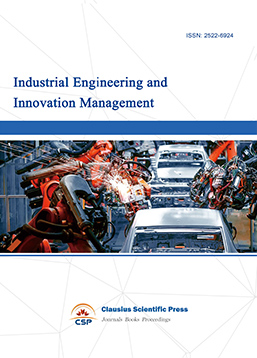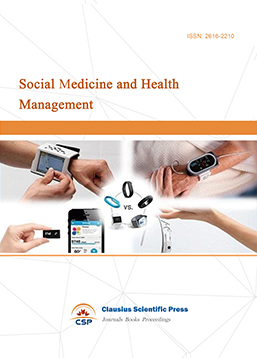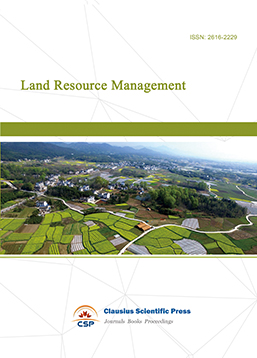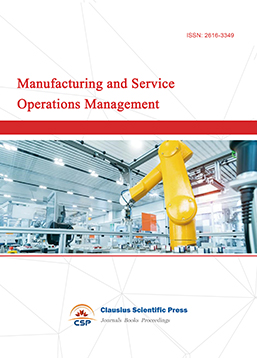Effect of Nano-zinc Oxide on Rapeseed Growth
DOI: 10.23977/agrfem.2023.060108 | Downloads: 13 | Views: 495
Author(s)
Xiaona Zhang 1, Ruipeng Huo 1, Juyuan Wang 1
Affiliation(s)
1 Agricultural Science and Engineering School, Liaocheng University, Liaocheng, Shandong, China
Corresponding Author
Juyuan WangABSTRACT
Landscape plants are an important part of landscape architecture. Landscape plants can not only be used for plant landscaping, but also beautify the environment, improve the environment and regulate the climate, and play an important role in the stability of the ecosystem and the improvement of human living environment. The extensive application of nano-materials in industry, agriculture and other fields has led to a large number of residues in the soil and water environment, affecting the growth and development of garden plants. It has been proved that high concentration of nanomaterials have certain toxic effects on plants, but the research is not sufficient and needs further research. In this study, Rapeseed, an oil crop with ornamental and economic value, was taken as the research object, and nano-zinc oxide was used as the experimental material to explore its mechanism. The main results are as follows: The germination of Rapeseed seeds was studied by using the filter paper culture dish germination method. It was found that the germination rate of Rapeseed seeds under the treatment of nano-zinc oxide was not significantly different from the control. Compared with CK, under 400 mg•L-1 nano-zinc oxide and the same concentration of zinc oxide, the biomass of Rapeseed significantly decreased, and the photosynthesis of Rapeseed absorbed light energy through chlorophyll, while under 400 mg•L-1 nano-zinc oxide stress, the chlorophyll content of Rapeseed decreased, and the photosynthetic capacity decreased. Compared with CK, 400 mg•L-1 nano-zinc oxide and 400 mg • L-1 zinc oxide significantly increased the hydrogen peroxide content by 73.16% and 67.07%, respectively. Compared with 400 mg•L-1 nano-zinc oxide, 400 mg•L-1 zinc oxide significantly decreased by 3.52%; Compared with CK, each treatment significantly increased the content of superoxide anion, and compared with 400 mg•L-1 nano-zinc oxide, 400 mg•L-1 zinc oxide significantly decreased 4.81%.
KEYWORDS
Nanometer zinc oxide; Rapeseed; Physiological characteristicsCITE THIS PAPER
Xiaona Zhang, Ruipeng Huo, Juyuan Wang, Effect of Nano-zinc Oxide on Rapeseed Growth. Agricultural & Forestry Economics and Management (2023) Vol. 6: 46-52. DOI: http://dx.doi.org/10.23977/agrfem.2023.060108.
REFERENCES
[1] Bandyopadhyay S, Plascencia-Villa G, Mukherjee A, et al. Comparative phytotoxicity of ZnO NPs, bulk ZnO, and ionic zinc onto the alfalfa plants symbiotically associated with Sinorhizobium meliloti in soil [J]. Science of the Total Environment, 2015, 515: 60-69.
[2] Hong F, Yang F, Liu C, et al. Influences of nano-TiO2 on the chloroplast aging of spinach under light [J]. Biological trace element research, 2005, 104(3): 249-260.
[3] Yang F, Hong F, You W, et al. Influence of nano-anatase TiO2 on the nitrogen metabolism of growing spinach [J]. Biological trace element research, 2006, 110(2): 179-190.
[4] Changmei L, Chaoying Z, Junqiang W, et al. Research of the effect of nanometer materials on germination and growth enhancement of Glycine max and its mechanism[J]. Soybean Science, 2002, 21(3): 168-171.
[5] Lin D, Xing B. Phytotoxicity of nanoparticles: inhibition of seed germination and root growth [J]. Environmental pollution, 2007, 150(2): 243-250.
[6] Lin M, Shen Mi, Wu J, et al. Effects of nano-zinc oxide on seed germination and seedling growth of two vegetables [J]. Journal of Agricultural Resources and Environment, 2021, 38(01): 72-78.
[7] Wang Z, Luo Z, Yan C, et al. Effect of nano-zinc oxide on the growth of mung bean sprouts [J]. Journal of Agricultural Environmental Science, 2011, 30(4): 619-624.
[8] Cao C, Huang J, Wang N, et al. Effect of nano-zinc oxide on seed germination of wetland plants [J]. Journal of Southeast University (Natural Science Edition), 2017, 47(2): 416-420.
[9] Sun L, Song F, Li X, et al. Effects of nano-zinc oxide on maize seed germination and root carbon metabolism [J]. Soil and crops, 2020, 9(1): 40-49.
[10] Yoon S J, Jin I K, Lee W M, et al. Zinc oxide nanoparticles delay soybean development:A standard soil microcosm study [J]. Ecotoxicology & Environmental Safety, 2014, 100(feb.): 131-137.
[11] Sahoo S K, Dwivedi G K, Dey P, et al. Green synthesised ZnO nanoparticles for sustainable production and nutritional biofortification of green gram[J]. Environmental Technology & Innovation, 2021(5816): 101957.
[12] Yu J, Li L, Zhang Y, et al. Effect of nano-zinc oxide on rice seed germination and seedling growth [J]. Journal of Changchun Normal University, 2021, 40(2): 127-131, 164.
[13] Song X, She X. Production of hydrogen peroxide in plants and its physiological role [J]. Journal of Lianyungang Teachers College, 2010, 27(04): 99-103.
[14] Wang G, Tang L, Fan S, Wang Jiayu. The role of antioxidant mechanism in the tolerance of crops to abiotic stress [J]. Journal of Shenyang Agricultural University, 2012, 43(06): 719-724.
[15] Ma M, Ma C, Xiao T, et al. Study on the extraction of chlorophyll from kiwi leaves [J]. Food industry science and technology, 2006(06): 140-143.
[16] Gao H, Hu W. Overview of antioxidant enzyme system of organisms [J]. Biology teaching, 2018, 43(10): 3-5.
[17] Li L, Long M J, Islam F, et al. Synergistic effects of chromium and copper on photosynthetic inhibition, subcellular distribution, and related gene expression in Brassica napus cultivars[J]. Environmenta Science and Pollution Research, 2019, 26(12): 11827-11845.
[18] Miralles P., Church T. L., Harris A. T. Toxicity, Uptake, and Translocation of Engineered Nanomaterials in Vascular plants. Environmental Science & Technology, 2012, 46 (17): 9224-9239.
[19] Wierzbicka M. Obidzihska J. The effect of lead on seed imbibition and germination in differentplant species. Plant science, 1998, 137(2): 155-171.
[20] Cui J, Liu H, Li S. Effects of water stress on the production of superoxide anion and its relationship with photosynthesis in apple seedlings [J]. Journal of Shihezi University (Natural Science Edition), 2007(02): 172-176.
| Downloads: | 2844 |
|---|---|
| Visits: | 91523 |
Sponsors, Associates, and Links
-
Information Systems and Economics

-
Accounting, Auditing and Finance

-
Industrial Engineering and Innovation Management

-
Tourism Management and Technology Economy

-
Journal of Computational and Financial Econometrics

-
Financial Engineering and Risk Management

-
Accounting and Corporate Management

-
Social Security and Administration Management

-
Population, Resources & Environmental Economics

-
Statistics & Quantitative Economics

-
Social Medicine and Health Management

-
Land Resource Management

-
Information, Library and Archival Science

-
Journal of Human Resource Development

-
Manufacturing and Service Operations Management

-
Operational Research and Cybernetics


 Download as PDF
Download as PDF